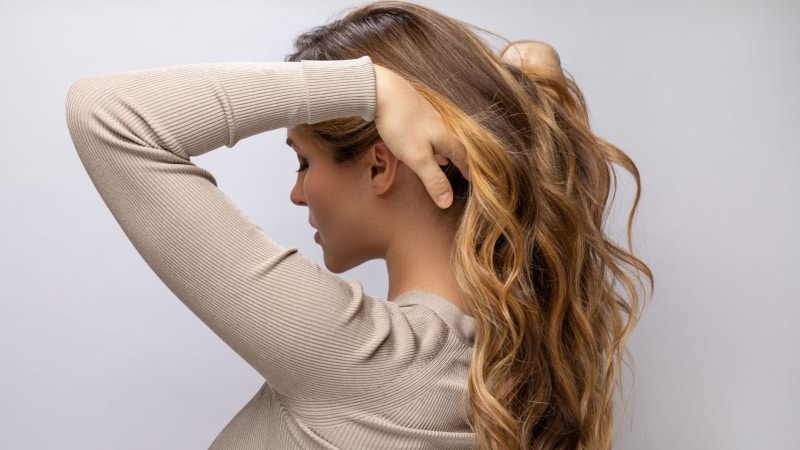Discover the secrets of one of the most popular coloring techniques that is winning the hearts of women around the world. Balayage is a timeless way to add a new character to your hair!
Balayage: What is it and why is it so popular?
Balayage, also known as balayage, is a hairdressing technique for coloring hair, which literally means “sweeping.” It comes from the French word “balayage.” The technique involves manually applying paint to selected parts of the strands to create an uneven, natural effect. Unlike traditional highlights, balayage does not require regular reconditioning, making it a more practical solution for many women. With this method, a natural, gradual color transition effect is achieved, which adds depth and three-dimensionality to the hair. It is ideal for those who want a subtle change, but at the same time want to avoid radical makeovers. The popularity of this technique is due to its ability to enhance the natural beauty of hair, adding depth and creating a youthful and fresh look.
Blonde balayage: what are its advantages?
Blondebalayage is one of the most desirable versions of this technique. Thanks to it, hair takes on golden, warm highlights that go perfectly with a tan and summer makeup. What’s more, balayage blonde is less invasive to hair than traditional coloring, leaving it healthier and shinier. Unlike other coloring techniques, blonde balayage allows for a more natural look, with subtle color transitions. This makes the hair look more voluminous and full of life. In addition, balayage blonde is more forgiving on the hair, meaning less damage and breakage compared to traditional coloring methods. In addition, you have a rich palette to choose from, such as dark blonde, coffee blonde and many more!
Balayage on dark hair: Is it a good choice?
Balayage ondark hair is gaining popularity among hairdressing enthusiasts. Why? Because it allows you to subtly lighten dark strands, like highlights on dark hair, adding depth and shine. Unlike traditional highlights, balayage on dark hair does not create a clear line of demarcation between natural and dyed color. As a result, the effect is more natural and harmonious. The key to success, however, is to choose the right shade to blend with the base hair color. It is also worth paying attention to the technique of applying the paint – the more precise and delicate the strokes, the more natural the end result.

Balayage on gray hair
Gray hair, although for many years it was associated with age, has now become a symbol of elegance and mature beauty. Balayage on gra y hair is an excellent way to highlight its unique character. This technique allows you to add shine and depth to gray strands, as well as hide any unevenness of color. It’s a good idea to be inspired by photos from the Internet to find the perfect shade and paint application technique for you. Many hair stylists recommend balayage on gray hair, because it allows you to achieve a “gray blending” effect, a harmonious combination of gray and colored highlights, which adds a youthful and fresh look to the hairstyle.
Ombre balayage for short hair: is it possible?
Ombre balayage for short hair is a combination of two hairdressing techniques that have gained great popularity in recent years. Although many people associate ombre balayage mainly with long hair, short hairstyles can also benefit from this unusual technique. The key to success is the skillful combination of colors, which create a smooth transition from the darker root to the lighter ends. This gives short hairstyles a light, fresh look and makes them more feminine. What’s more, ombre balayage on short hair can add volume and define individual strands, which is especially beneficial for those with thin hair. It’s also worth mentioning that such coloring is less maintenance-intensive, making it ideal for those with busy lifestyles.
Summary: The magic of balayage in your hairstyle.
Balayage is a technique that has won the hearts of many women around the world. It allows us to enjoy a natural, three-dimensional hair color that adds shine and depth to our hair. Whether you are a blonde, brunette or a gray hair owner, balayage is sure to enhance your natural beauty.
Balayage – frequently asked questions
No, highlights involve evenly lightening selected strands of hair from root to tip, while balayage is a hand-painting technique that produces a more natural effect.
The cost of a balayage depends on the salon, the region and the length of the hair, but prices usually start from tens to hundreds of zlotys.
Both balayage and reflections have their advantages. Balayage gives a more natural effect, while reflections are more pronounced. The choice depends on individual preference.
Sombre is a subtler version of ombre, where the color transitions are smoother and softer. Balayage, on the other hand, involves hand-painting the hair for a natural effect.
Balayage suits almost every person, regardless of hair color or length. The key is to choose the right shades that harmonize with your natural skin and hair color
Any coloring technique can affect the condition of the hair. However, properly performed balayage and the use of aftercare products minimize the risk of hair damage.

